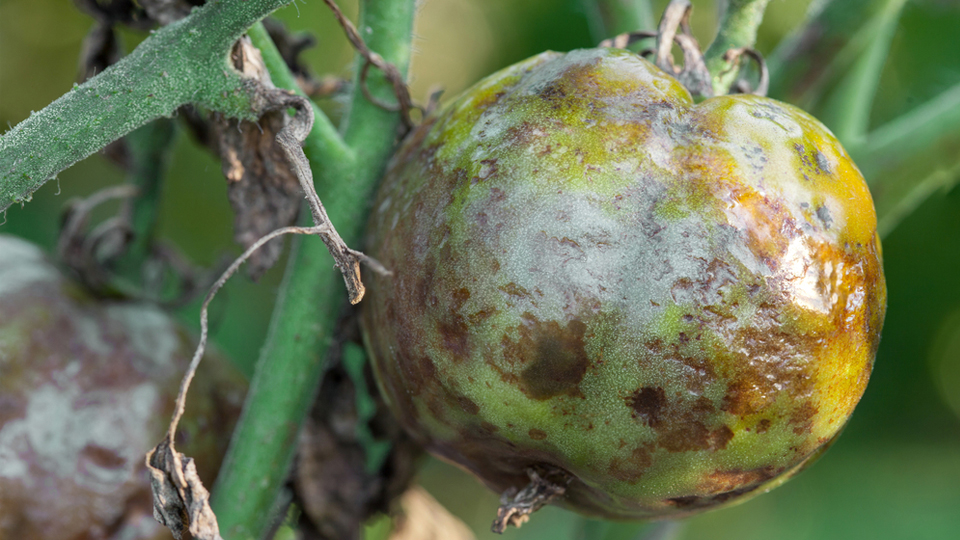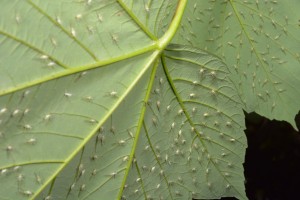4 Common Plant Infestations that Can Ruin Your Hydroponics Garden

Despite your best efforts to manage temperature, oxygen and nutrients, plants in your hydroponics system can and do die. Your plant might be full of life, vibrant with colour, one day, and wilting and washed out the very next.
This is because plant infestations are inevitable. While you can’t fully prevent them, it helps to understand the most common threats and basic preventative measures.
Molds
Mold thrives in moist and humid conditions. In fact, it needs only moisture, the right temperature and a food source (i.e. your plant) to grow.
Of course, in a hydroponics system there’s water—even worse, there’s standing water. Consider the small puddles that form on the leaves. It’s not uncommon then for mold to grow on leaves, roots and stems. This is especially likely if there’s poor air circulation inside your grow room.
Gray mold, for an example, initially appears white on wilted flowers, but eventually a gray, fuzzy growth (packed with mold spores) covers all affected areas of the plant. Gray mold typically attacks flower buds.
Insects
Insects can destroy leaves, stems and, in some cases, roots. Aphids, whiteflies and thrips are three of the most common culprits, although thrips rarely damage an indoor garden.
Aphids, for an example, vary in colour—from green to black—and use their beaks to suck sap, ruining leaves and stems. Beware of root aphids.
Spider mites
Spider mites are particularly harmful in a short period of time.
They hinder the plant’s ability to regulate moisture—an absolutely crucial function—by puncturing the leaves and prompting the plant to close its stomata while moisture escapes. Because the spider mite mines cells and moisture from the leaves, they become dry and brittle.
Unlike mold, mites do not prefer humidity. They do love the heat though and will reproduce at an alarmingly fast rate given the right conditions.
The following are a few of the most recognizable signs of a spider mite problem (beginning to advanced):
- Tiny white holes in the leaves
- Silky webs around the tops of the leaves
- Silky webs hanging in bunches from the tops of the leaves
Viruses
A virus is serious trouble. Once your plant has one, it becomes physically warped and eventually dies. Unlike previously mentioned infestations, there’s no existing cure or treatment for a virus.
Besides distortion, light green or yellow streaks on the leaves indicate a viral infection. Keep an eye on cucumber and tomato plants, as these are among the plants most susceptible.
Viruses do not threaten just one plant, but your entire grow room. So, if you find one plant is infected, it’s best that you burn it and thoroughly clean your grow room.
Prevention tips
For starters, make sure your plant has all the nutrients it needs. The stronger it is, the better it can defend itself against an attacker. Once you’ve ensured it’s healthy, take the following steps to reduce your chances of an infestation:
- Keep buckets, scissors and any other tools you use clean.
- Keep the floors impeccably clean; sweep up debris and plant matter.
- Keep pests, pets and even people away from your plants.
- Ensure new plants are disease-free.
- Use a magnifying glass to spot mites and other problems early on.
To conclude, even if you give your garden the utmost care and attention, there’s always risk of an infestation. It can be difficult to treat your plants once they’ve been attacked, but continue to check our online resources for indoor gardening. We’ll share tips and tricks for handling not only plant infestations, but deficiencies and other threats.
Resources
- https://www.bustmold.com/resources/about-mold/types-of-mold/
- https://www.britannica.com/animal/insect
- https://cropwatch.unl.edu/2016/identifying-spider-mite-damage-species-responsible
- https://www.the-scientist.com/infographics/how-viruses-attack-plants-30340
Please note: Mold from below the ground is a threat as well. However, in this article, we focus solely on above-ground threats. Stay tuned for more information-packed posts to come!

